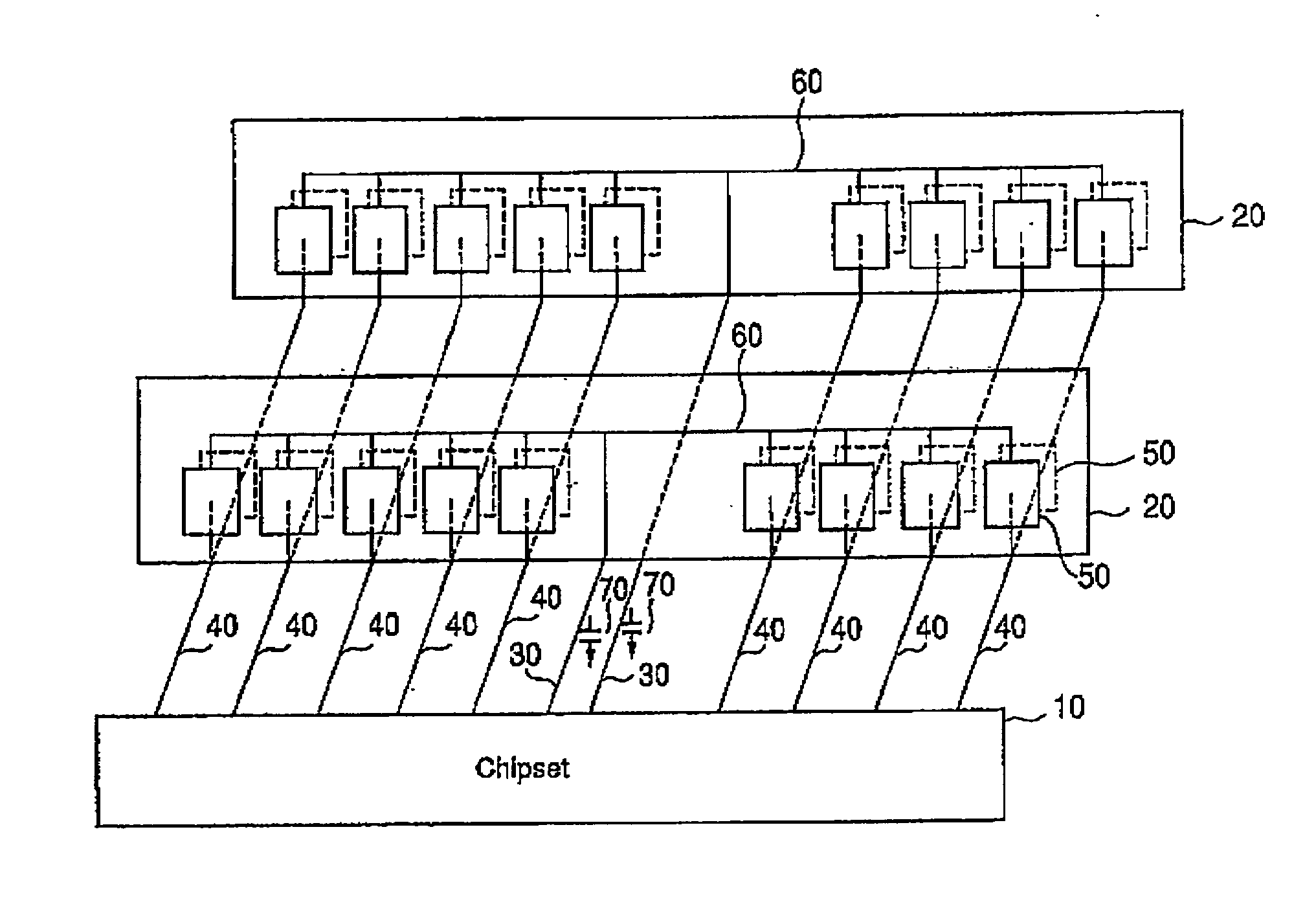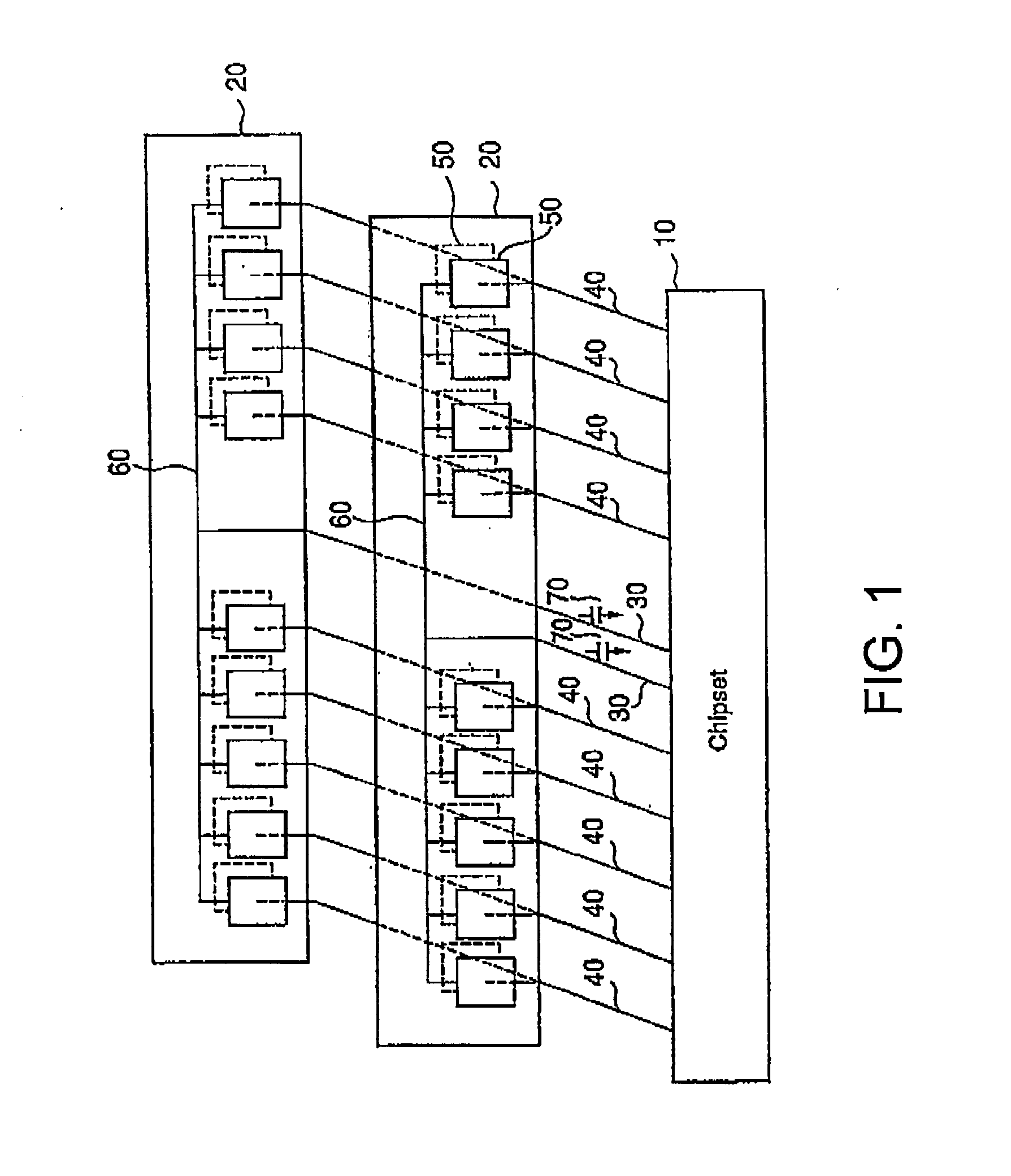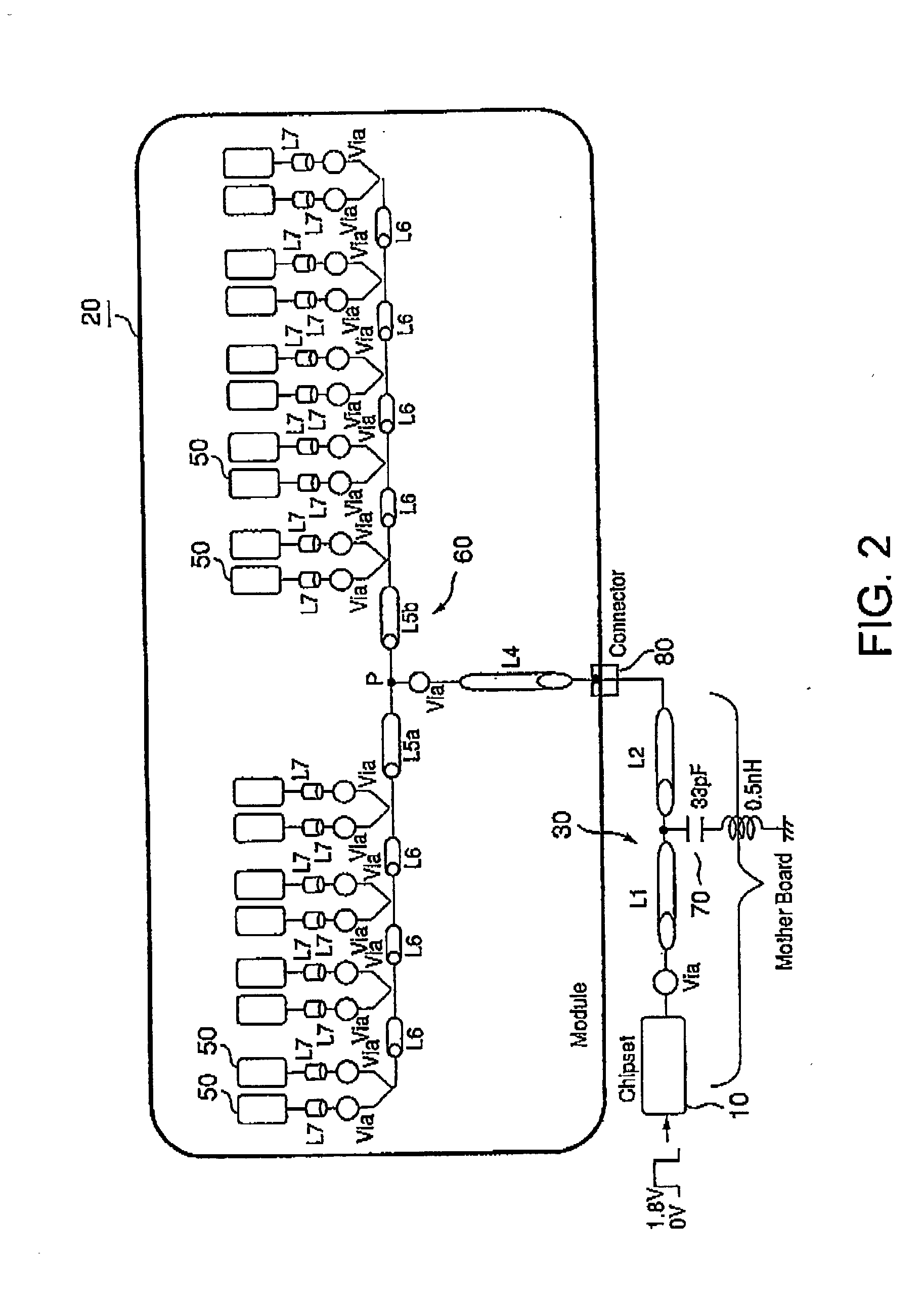Unbuffered memory system
a memory system and buffer technology, applied in the field of memory systems, can solve the problems of unsatisfactory waveforms, ) cannot be obtained, and certain limitations on the size of the practicable module substra
- Summary
- Abstract
- Description
- Claims
- Application Information
AI Technical Summary
Benefits of technology
Problems solved by technology
Method used
Image
Examples
first embodiment
[0083] As shown in FIG. 1, a memory system according to the present invention comprises a chipset 10, memory modules 20, C / A buses 30 and CLK buses 40. On each of the memory modules 20 in this embodiment, a total of 18 DRAM devices 50 are mounted, with 9 DRAM devices 50 on each side thereof. The DRAM devices 50 all have the same characteristics, and the memory module 20 is assumed to have an ECC function.
[0084] Inasmuch as FIG. 1 conceptually shows the memory system according to this embodiment, a mother board is omitted. In the actual system, however, the chipset 10 is mounted on a mother board, and the C / A buses 30 and the CLK buses 40 are also disposed on the mother board. A capacitor 70 is connected to each C / A bus 30. Further, sockets are provided on the mother board and, by inserting a connector, which will be described later, of the memory module 20 into each of the sockets, the memory system shown in FIG. 1 is constituted. Specifically, by the insertion of the memory module ...
second embodiment
[0115] A memory system according to the second embodiment of the present invention is a modification of the foregoing first embodiment. In such a modification, the number of the devices mounted on a memory module 20 is set to 9.
[0116] The memory system according to the second embodiment shown in FIG. 14 differs from the first embodiment in that, other than the mounted device number, a terminating resistor 90 is added to an internal C / A bus 60. This is adopted as a countermeasure because overshoot is caused following the reduction in mounted device number. The other configuration such as a configuration of a chipset 10, an equivalent circuit of a connector 80, an equivalent circuit of a via hole, an equivalent circuit of a DRAM device 50 and so on are like those in the first embodiment, and thus explanation thereof will be omitted hereinbelow. Further, since things related to the output impedance of the chipset 10 are also like in the foregoing first embodiment, explanation thereof w...
third embodiment
[0125] Like the second embodiment, a memory system according to the third embodiment of the present invention is provided with a countermeasure for overshoot that is caused by setting the mounted device number to nine.
[0126] In the overshoot countermeasure according to this embodiment, a resistor having a predetermined value is inserted on the first wiring portion of the internal C / A bus 60 (i.e. between the connector 80 and the branch point P). Specifically, as shown in FIG. 16, a resistor 100 having a resistance value Rs (=10.OMEGA..+-.20%) is connected in series between the wiring L4 and the branch point P.
[0127] With this structure, in addition to the effect achieved by the second embodiment, the overshoot level can be further lowered and, since the power for operating the terminating resistor is not required, the power saving can be accomplished.
PUM
 Login to View More
Login to View More Abstract
Description
Claims
Application Information
 Login to View More
Login to View More - R&D
- Intellectual Property
- Life Sciences
- Materials
- Tech Scout
- Unparalleled Data Quality
- Higher Quality Content
- 60% Fewer Hallucinations
Browse by: Latest US Patents, China's latest patents, Technical Efficacy Thesaurus, Application Domain, Technology Topic, Popular Technical Reports.
© 2025 PatSnap. All rights reserved.Legal|Privacy policy|Modern Slavery Act Transparency Statement|Sitemap|About US| Contact US: help@patsnap.com



